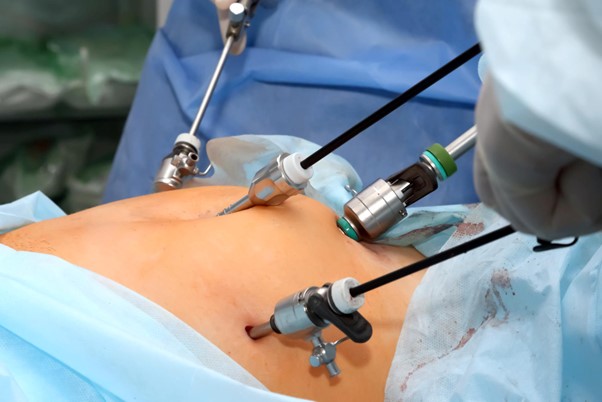Introduction to Laparoscopic Lymphadenectomy for Gynecological Cancers
Laparoscopic lymphadenectomy for gynecological cancers is a modern, minimally invasive cancer surgery. It helps doctors remove lymph nodes to check for cancer spread. Many women with cancers of the uterus, cervix, or ovaries may need this procedure. Because it uses small cuts and a camera, recovery is often faster than with traditional surgery. In this blog, you will learn what this surgery involves, its benefits, and what to expect during recovery.
What Is Laparoscopic Lymphadenectomy?
Laparoscopic lymphadenectomy is a type of surgery. Doctors use small tools and a camera to remove lymph nodes from the pelvis or abdomen. Lymph nodes are small glands that help fight infection. In cancer, these nodes may trap cancer cells. Removing them helps doctors know if cancer has spread. This surgery is less invasive than open surgery, which means smaller cuts and less pain.
Indications: When and Why Is It Performed for Gynecological Cancers?
Doctors may suggest laparoscopic lymphadenectomy for several reasons. Most often, it is done for cancers of the uterus, cervix, or ovaries. Here are some common reasons:To check if cancer has spread to the lymph nodesTo help plan further treatment, such as chemotherapy or radiationTo remove cancer that may be in the lymph nodes
Sometimes, it is part of the main cancer surgery. Other times, it is done as a separate procedure. Your doctor will explain why it is needed in your case.
Step-by-Step Overview of the Procedure
Understanding the steps can help you feel more at ease. Here is a simple overview:First, you will get anesthesia so you sleep during the surgery.Next, the surgeon makes a few small cuts in your belly.Then, a thin camera (laparoscope) is placed through one cut. This lets the doctor see inside.Special tools go in through the other cuts.The surgeon carefully removes the lymph nodes.Finally, the cuts are closed with stitches or glue.
Most surgeries take a few hours. You may go home the same day or stay overnight.
Benefits of Laparoscopic Approach vs. Traditional Surgery
Laparoscopic lymphadenectomy offers many advantages over open surgery. For example, it uses smaller cuts, which means less pain and quicker healing. Here are some key benefits:Shorter hospital stayLess blood loss during surgeryLower risk of infectionSmaller scarsFaster return to daily activities
Because recovery is easier, many patients prefer this minimally invasive cancer surgery.
Risks and Possible Complications
Like all surgeries, laparoscopic lymphadenectomy has some risks. However, most people recover without problems. Possible risks include:Bleeding or infection at the surgery siteDamage to nearby organs, such as the bladder or bowelBlood clots in the legsSwelling in the legs (lymphedema)
Your doctor will discuss these risks with you. They will also explain how they work to prevent them.
Recovery Process and Aftercare Tips
After surgery, you will spend some time in the recovery room. Most people can go home within one or two days. Here are some tips to help you heal:Rest as much as possible for the first few daysWalk gently to help prevent blood clotsKeep the cuts clean and dryFollow your doctor’s advice about bathing and activityWatch for signs of infection, such as redness or fever
Usually, you can return to normal activities in two to four weeks. However, always check with your doctor before resuming exercise or heavy work.
Prevention and Lifestyle Guidance
While surgery treats cancer, healthy habits can support your recovery. For example, eating a balanced diet helps your body heal. Staying active, as your doctor allows, can also boost your strength. Avoid smoking and limit alcohol, as these can slow healing. Regular follow-up visits are important to check your progress.
Frequently Asked Questions (FAQs)
Is laparoscopic lymphadenectomy safe?Yes, it is generally safe. Most people recover well, but all surgeries have some risks.How long does the surgery take?Usually, it takes two to three hours, but this can vary.Will I have scars?Yes, but they are small and often fade over time.When can I return to work?Many people return to work in two to four weeks, depending on their job and recovery.What should I watch for after surgery?Look for signs of infection, swelling, or pain that does not improve. Contact your doctor if you notice these.
Conclusion
Laparoscopic lymphadenectomy for gynecological cancers is a safe and effective way to check for cancer spread. Because it is minimally invasive, recovery is often quicker and easier. If you have questions or concerns, consult a gynecologic oncologist for personalized advice about laparoscopic lymphadenectomy.

